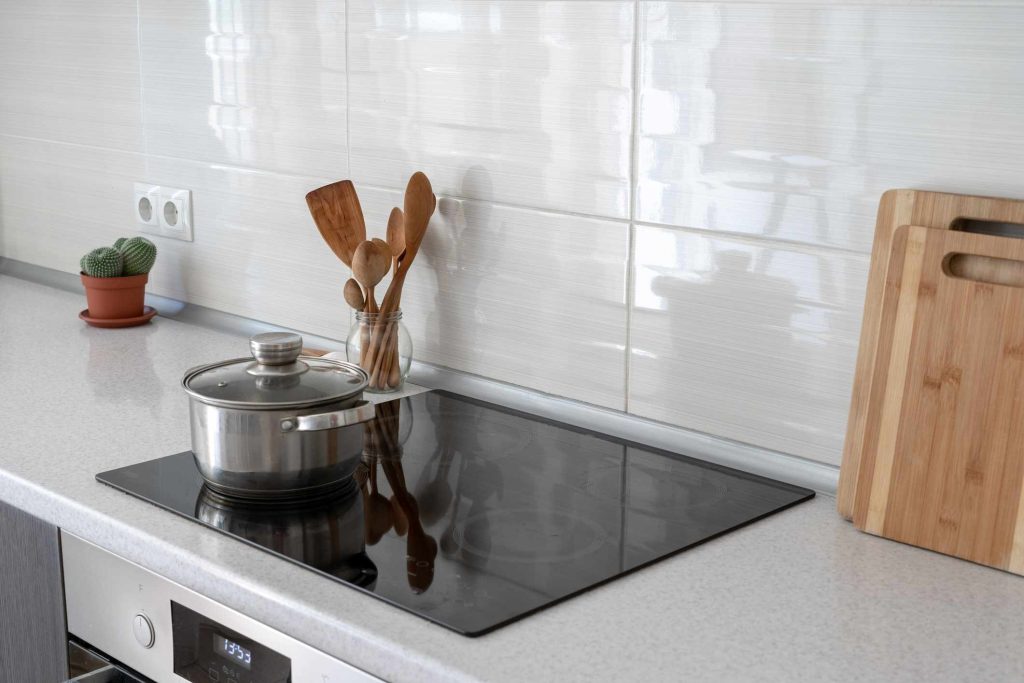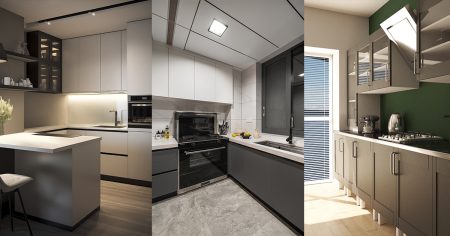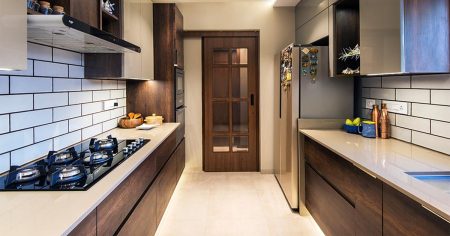Differences blur when looking at induction cooktops versus electric cooktops. Though induction cooktops use a different heating technology from conventional electric cooktops, both are electrically powered and are nearly matched in terms of energy efficiency, cleaning, and ease of installation.
Find out whether buying an induction cooktop or an electric cooktop—either radiant or coil—will work best for your kitchen and align with your cooking preferences.
Induction vs. Electric Cooktops: How They Work
There are three types of electric kitchen cooktops: induction, radiant, and coil. Though powered by electricity, induction cooktops are different from radiant and coil cooktops since they use electromagnetism to heat the pans. Radiant and coil cooktops both use heated electric coils or elements to cook the food.
| Induction Cooktop | Radiant Electric | Coil Electric | |
| Heating | Electromagnetic energy heats the cookware | Radiant heating elements under glass heat cookware | Exposed coils directly heat cookware |
| Top Style | Smooth top | Smooth top | Exposed coils |
| Efficiency | 85-percent energy efficient | 75- to 80-percent energy efficient | 75- to 80-percent energy efficient |
| Cookware | Cast iron, steel, or other ferromagnetic pans | Any cookware | Any cookware |
| Cleaning | Easy | Moderately easy | Difficult |
| Surface Temperature | Cool | Hot | Hot |
- Induction cooktop: Induction cooktops create a strong magnetic field below the cookware, essentially turning the cookware into a heating coil. The magnetic element does not heat up. There are no heated coils or flames on an induction cooktop. The entire top is protected by a ceramic glass top.
- Radiant electric cooktop: With radiant cooktops, electric coils (radiant heating elements) located underneath a ceramic glass top heat the cookware.
- Coil electric cooktop: Coil electric cooktops cook food with raised, exposed heated coils. The cookware sits directly on top of the coils, with no intervening glass top.
Power Requirements
Induction and electric cooktops typically require 220/240V electricity. If the kitchen already has an electric stove-oven combination, it will be supplied with 220/240V electricity, making it suitable for replacement. Portable two-burner induction and electric cooktops use 120V, 20 amp electricity.
Cookware
Induction ranges and cooktops are limited to cast iron or steel cookware, while radiant or coil electric cooktops can use any type of cookware.
- Induction cooktop: Use only cookware made from cast iron, enameled cast iron, or some types of stainless steel. Some stainless steel alloys are not magnetic enough, so they will not work. Test the pan with a magnet. If the magnet sticks strongly, it is suitable for use. Or, use a metal pan adapter.
- Radiant or coil electric cooktop: Use any type of pan that works with induction cooktops, plus all other non-ferrous materials such as glass, copper, aluminum, and aluminum/stainless steel.
Cleaning
Induction and radiant electric cooktops are easier to keep clean than coil electric cooktops. Induction cooktops clean up easier than radiant cooktops due to the cooler surface.
- Induction cooktop: The ceramic glass top contains spills and makes cleaning simple. Use a sponge and baking soda to clean an induction stove. Use a ceramic glass cooktop cleaning product for more difficult stains.
- Radiant electric cooktop: Like an induction cooktop, the glass top is easy to wipe off. The difference is that radiant cooktops get hot, so spills are more likely to fuse onto the surface.
- Coil electric cooktop: The exposed coils and drip pans are more difficult to clean than smooth surfaces. Coils can be removed and soaked. The top should be sponged off.
Safety
Since the top remains mostly cool, induction cooktops are safer to use than radiant or coil electric cooktops.
Radiant and coil electric cooktops get hot and stay hot for a long time after the heat has been turned off.
Durability
Electric cooktops and ranges, in general, are durable kitchen appliances that can last up to 15 to 18 years.
Coil electric cooktops are good candidates for maxing out lifespan predictions because they have no glass top that can crack or scratch. Plus, it’s simple and inexpensive to swap out the heating coils should they fail.
Costs
Induction cooktops cost $350 to $700 more than radiant electric cooktops. Coil electric cooktops are about one-third of the cost of induction cooktops and about half the cost of radiant electric cooktops.
- Induction cooktop: Induction cooktops range from $900 to $1,900.
- Radiant electric cooktop: Electric radiant cooktops cost from $550 to $1,200 for four- to five-burner cooktops.
- Coil electric cooktop: Coil electric cooktops cost about $350 to $650.
Pros and Cons
Induction Cooktops
-
Cool cooktop
-
Pans heat quickly
-
Saves energy
-
Easy cleaning
-
Ferromagnetic pans only
-
Top can scratch
-
More expensive
-
Noise during operation
Induction cooktops start up between 20- to 40-percent faster than either of the electric cooktops (and natural gas, too).
With an 85-percent efficiency rating, induction cooktops are about five to 10 percent more energy efficient than conventional electric cooktops.
Some users find the low hum during operation to be annoying. Also, limiting the cookware to ferromagnetic materials may be a deal-breaker for some users—especially those with major investments in non-compatible cookware.
Electric Cooktops
-
Inexpensive to purchase
-
Saves energy
-
Easy to install
-
Cleaning easy (radiant models)
-
Slow heat time
-
Heat not steady
-
Remain hot after shut off
-
Cleaning is difficult (coil models)
Electric cooktops are less expensive to purchase than induction units. While they aren’t as energy efficient as induction models, the difference is slight.
To save energy (and to limit indoor pollutants), gas cooktop owners don’t necessarily need to buy induction cooktops. Switching to a radiant or coil electric unit saves energy, plus it reduces indoor pollutants to nothing.
Radiant and coil electric cooktops start up slowly. Once hot, the heat can fluctuate. Cool-down is equally slow, which presents a safety hazard.
Efficiency
Induction cooktops are about five to 10 percent more energy-efficient than conventional electric cooktops. So, while induction cooktops are more efficient than electric cooktops, the difference is minimal.
- Induction cooktop: Most of the electricity generated by induction cooktops cooks the food: up to 85-percent. Only a fraction of the electricity—about 15-percent—is wasted.
- Electric radiant or coil cooktop: With conventional electric cooktops, most of the generated electricity goes toward cooking the food: about 75- to 80-percent of it.
How to Pick the Right Cooktop
Choose an induction cooktop for a safe, easy-to-clean appliance that’s stingy with its energy output, though at a higher purchase point. You’ll also have to be comfortable with using certain types of cookware.
Radiant cooktops are a crossover category between induction cooktops and coil electric cooktops. Like induction cooktops, they have smooth, easy-to-clean glass tops. Like coil electric cooktops, they heat the cookware directly and can use any type of cookware.
Coil electric cooktops are less expensive to purchase and are very durable, easy-to-fix units, though at the expense of greater cleaning and maintenance duties.
-
Is an induction cooktop better than electric?
Purchase price aside, an induction cooktop is somewhat better than an electric cooktop because it is easier to clean and slightly more energy efficient.
-
Do cast iron pans work on induction?
Cast iron pans work on induction cooktops—usually, quite well since they are composed of many ferrous metals like pig iron, recycled steel, and alloys. Cast iron pans can scratch induction cooktop glass tops, so use enameled cast iron cookware. Do not slide the cookware on the glass top, either.
Read the full article here














